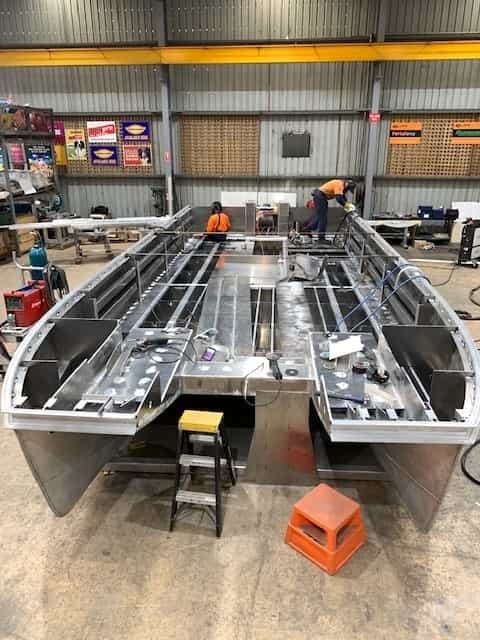Experience Hulls Engineering Australia’s aluminium and steel boat fabrication for performance-driven, marine vessel solutions and reliability.
Aluminium and steel boat fabrication supports the development of marine vessels built for strength, longevity, and performance in demanding maritime environments. These methods ensure hull integrity and structural stability across rough waters, load-bearing operations, and extended sea usage.
Fabrication Techniques for Lasting Marine Performance
Aluminium and steel boat fabrication incorporates advanced welding techniques to guarantee consistent, high-strength joins across all structural areas. Methods such as MIG and TIG welding are selected based on material composition, vessel size, and functional specifications.
The shaping process requires precision rolling, plasma cutting, and CNC-controlled folding to achieve accurate dimensions. Such processes reduce material wastage and maintain symmetry, crucial for vessel hydrodynamics and stability.
Assembly phases involve modular integration of pre-cut components, allowing efficient workflows and controlled quality checks. Each unit undergoes load testing and fitment assessments to validate mechanical reliability before final launch.
Comparative Strengths in Aluminium and Steel Boat Fabrication
Aluminium is favoured for its corrosion resistance and low material density, which collectively enhance vessel agility and fuel efficiency across frequent-use marine routes. These properties allow streamlined hull configurations that reduce drag, making aluminium fabrication highly suited to fast-response crafts, coastal ferries, and patrol boats requiring minimal upkeep and operational downtime.
Steel, in contrast, offers superior tensile strength and structural rigidity, accommodating heavy payloads and withstanding extreme impact and environmental stress. This makes it the preferred material for high-tonnage vessels such as commercial ships, ocean-going tugs, and offshore support vessels where load-bearing capacity and hull endurance are critical over extended operational cycles.
Industry Applications for Aluminium and Steel Fabricated Boats
Aluminium and steel boat fabrication accommodates a wide range of marine applications across critical Australian industries. These vessels meet specific operational demands by offering dependable performance, material efficiency, and structural resilience.
• Defence operations: Naval and coastal fleets rely on tailored aluminium and steel vessels for durability, tactical mobility, and load-bearing capacity in mission-specific deployments.
• Commercial fishing: Customised hull structures support large-volume hauls and withstand constant exposure to corrosive saltwater environments.
• Marine tourism: Operators benefit from lightweight, stable vessels that offer smooth navigation and enhanced passenger comfort on extended sea tours.
• Cargo transport: Fabricated steel vessels deliver long-term structural reliability and load optimisation for commercial freight movement.
• Ferry services: Aluminium boats provide daily transit efficiency through reduced fuel consumption and streamlined embarkation designs.
• Harbour maintenance: Robust steel boats perform demanding tasks such as towing, dredging, and port servicing under high mechanical stress.
• Research and survey: Purpose-built vessels maintain operational consistency for long-duration environmental monitoring and data acquisition missions.
Precision Integration through Custom Engineering
Hulls Engineering Australia supports the customisation of marine vessels tailored to sector-specific functions using refined fabrication strategies. Both aluminium and steel variants are engineered to optimise the balance between weight, performance, and safety in marine environments.
Discuss with us your operational requirements to ensure each specification is met with structurally sound and performance-oriented fabrication outcomes.
Read this blog for more enhanced details about the topic: Aluminium boat hulls vs steel boat hulls


